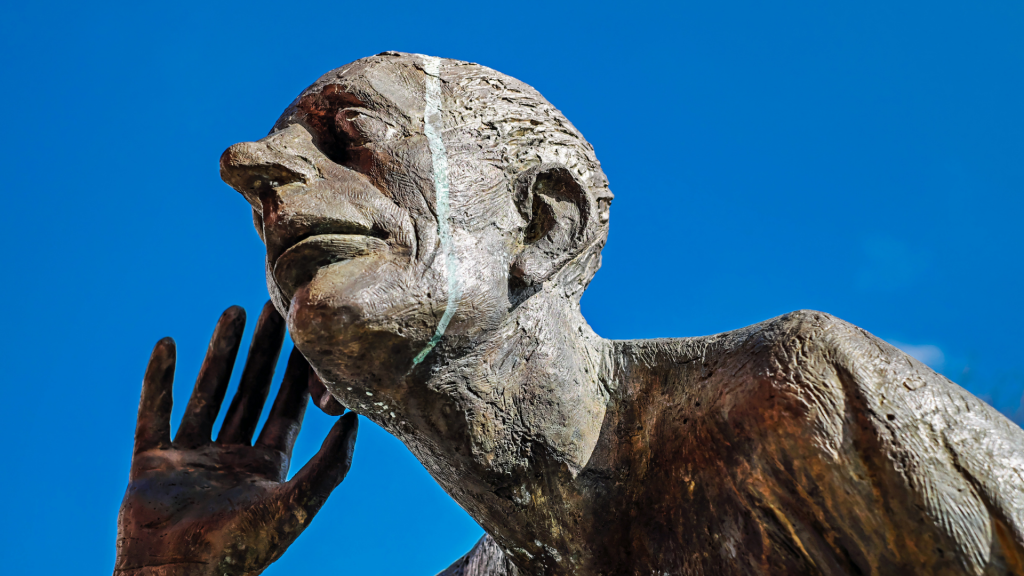One of the most important skills for any human being to develop who lives in a social setting is that of listening. We all hear to the best of our biological ability to do so. Those who are deaf don’t hear but they are forced to listen to people, as it were, either through lip reading or else through sign language. Those who can hear, frequently don’t listen to others because consciously or unconsciously they tune out the sound in their brain. Or they don’t tune out the sound, but instead they tune out the verbal meaning conveyed by the language communicators.
As a writer whose focus is on the relationship between living environments and human behavior, it is my belief that different kinds of living environments generate different degrees of attentiveness among people who are put in a position of listening to others. In more traditional natural environments, where there are more organic templates, it is easier for people to bond with one another. The organic stimulation from the grounding created in this situation makes it easier for people to actually listen to what another person is saying. In particular, the organic stimulation actually becomes a good supportive backdrop to what the person is communicating. It is like a sensory cushion on which the conversation goes back and forth between people. The sounds of rushing water of streams, the rustling wind, the sounds of crickets, the calls of different kinds of birds and animals. Or even traditional village sounds. The movement of transport animals, sometimes over cobblestone streets. The sounds of craftspeople at their work. Blacksmiths making horse shoes. Carpenters and cabinetmakers making buildings and furniture for buildings. Cooks making delicious dishes at village inns. All these sounds are part of the rhythm of village life.
On the other hand, the sensory distortion of modern technological society creates a totally different kind of audio field against which to have verbal communication. In this modern kind of living environment, people experience a vacuum and tension-pocket type of audio pattern. It is filled with sensory distortion: a backdrop of understimulation filled with pockets of overstimulation. The numbing silence created in vacuum spaces contrasted with the movement and noise of large crowds in large cities, jackhammers at construction sites, the honking of car horns, the roar of jets overhead, the pulsating noise of large machines in factories. And let’s not forget the leaf-blowers in the fall. These are audio patterns that we feel a need to steel ourselves against unlike the audio patterns in more traditional natural living environments. To survive these modern audio patterns, we, in effect, find a way of not listening to them, of turning them off in our brains. And it is much simpler to diminish all sounds, even those that under normal circumstances we would find important for us and want to focus on.
And here is a paradox. Just as we have been trying so hard to stop listening to the abrasive soundscape that surrounds us, we build more and more sound devices and devices with significant sound components which require us to focus on what is being presented. Many of these sound devices try to re-create a more organic soundscape within a sound bubble. Hence, the use of earphones. Of course, many of the sounds that go into the earphones are part of the technological soundscape. The electric guitars and basses and keyboards that are the foundation of much of modern popular music. In these instances, the purpose of the earphones, is not to provide an audio grounding with lyrical organic melodies, but rather to shock us out of our numbness with more abrasive melody music.
Which gets us to an observation about a partial transformation in the relationship of people to the modern technological soundscape. Initially, during the industrial revolution, the abrasive sounds of technology were sounds that people had to steel themselves against, sounds that they wanted to escape if they could. As people increasingly felt a need to steel themselves against these sounds, the withdrawal from them put them into an experiential vacuum where they became increasingly numb. The loud abrasive sounds of electrified instruments served to help them, at least temporarily, to pull themselves out of their numbness and into a situation where they could feel more alive. In effect, people today are using one form of abrasive stimuli to diminish the negative effects of another. They listened to the abrasive sounds of rock and roll and other modern forms of popular music to drown out the abrasive sounds of generic modern technology in the background which psychologically they would try not to listen to let alone even hear.
Nevertheless, listening to the metallic twang of electric guitars, basses and keyboards is nothing compared to the quality of listening to all the organic sounds coming out of a more traditional natural living environment. In the former, one is focusing, listening to intermittently shock oneself out of the numbness within which one is immersed in modern technological society. In the latter, one is using the organic sounds as templates for bonding oneself with other people as well as the total organic living environment. Real listening is what happens in the latter environment.


Artículos Relacionados: